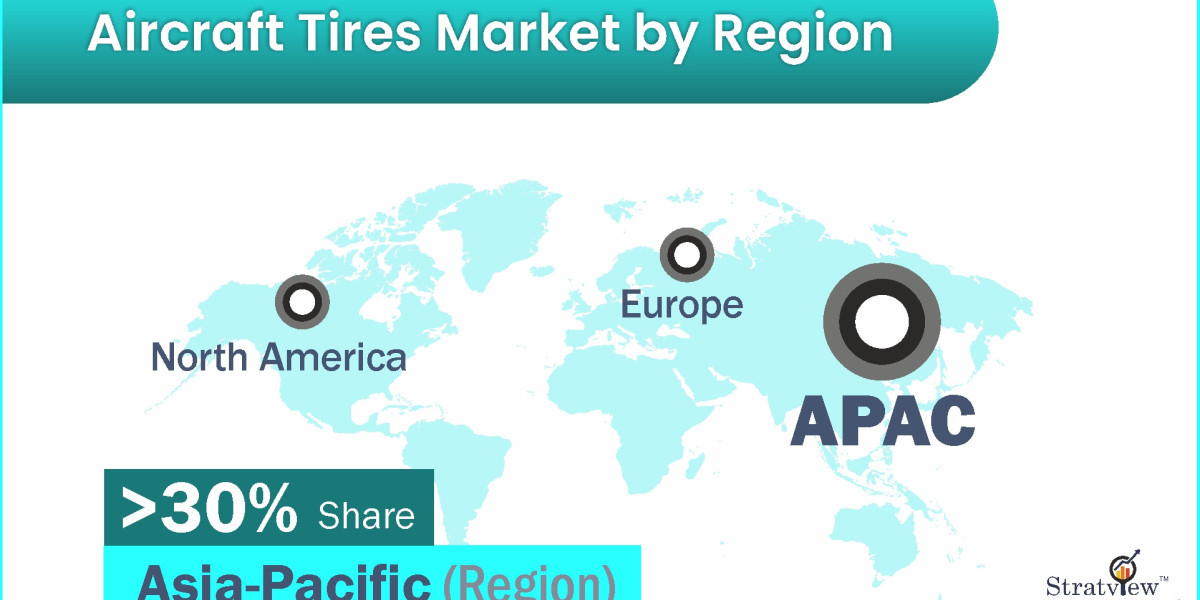According to Stratview Research, the aircraft tires market which accounted for US$ 1.5 billion in 2021 and is estimated to register an uncharted growth trajectory by recording a promising CAGR of 6.1% to reach a market value of US$ 2.6 billion in 2027.
In the realm of aviation, every component plays a critical role in ensuring safety, efficiency, and performance. Among these components, aircraft tires stand out as essential elements that enable smooth takeoffs, landings, and operations on the ground. As aviation continues to evolve and expand, the aircraft tires market is experiencing a surge in demand, driven by technological advancements, fleet expansion, and the relentless pursuit of safety and reliability. In this article, we delve into the dynamics of the aircraft tires market, exploring its growth potential, key players, and emerging trends shaping the future of aviation.
The Essential Role of Aircraft Tires
Aircraft tires are not just rubber wheels; they are engineered marvels designed to withstand immense pressures and temperatures while ensuring safe and efficient aircraft operations. These tires must support the weight of the aircraft during landing and taxiing, provide traction on various runway surfaces, and withstand high speeds and heavy loads. As the only point of contact between the aircraft and the ground, tires play a critical role in ensuring the safety and stability of flights, making them indispensable components of modern aviation.
Driving Forces Behind Market Growth
Several factors are driving the growth of the aircraft tires market:
Fleet Expansion: The growing demand for air travel, coupled with the expansion of airline fleets worldwide, is fueling the demand for aircraft tires. As airlines add new aircraft to their fleets and increase flight frequencies, the need for reliable and durable tires grows proportionally.
Technological Advancements: Advancements in tire materials, design, and manufacturing processes are enhancing the performance, durability, and safety of aircraft tires. Innovative technologies such as carbon fiber reinforcement, silica-based compounds, and advanced tread patterns are enabling tires to withstand higher loads, reduce fuel consumption, and enhance grip on wet and icy runways.
Safety and Regulatory Compliance: Safety is paramount in aviation, and aircraft tires play a crucial role in ensuring safe operations. Regulatory authorities such as the Federal Aviation Administration (FAA) and the European Aviation Safety Agency (EASA) impose stringent requirements on tire performance, quality, and maintenance to ensure compliance with safety standards.
Rising Demand for Retreaded Tires: With cost-saving and sustainability becoming key priorities for airlines, there is a growing trend towards the use of retreaded aircraft tires. Retreading involves refurbishing worn-out tire casings with new treads, extending the life of tires and reducing overall operating costs for airlines.
Key Players and Market Trends
The aircraft tires market is characterized by the presence of several key players, including major tire manufacturers, aerospace companies, and maintenance providers. Leading tire manufacturers such as Michelin, Bridgestone, Goodyear, and Dunlop dominate the market with their extensive product portfolios and global distribution networks.
Emerging trends in the aircraft tires market include:
Focus on Lightweight Materials: Manufacturers are increasingly incorporating lightweight materials such as composites and advanced alloys into tire construction to reduce overall aircraft weight and improve fuel efficiency.
Integration of Sensor Technology: The integration of sensors and IoT (Internet of Things) technology into aircraft tires allows for real-time monitoring of tire pressure, temperature, and performance, enabling predictive maintenance and enhanced safety.
Development of Electric Aircraft: The rise of electric and hybrid-electric aircraft presents new opportunities and challenges for the aircraft tires market. Electric propulsion systems generate different loads and operating conditions than traditional aircraft engines, necessitating the development of specialized tires capable of meeting the unique requirements of electric aircraft.
Conclusion
As the aviation industry continues to soar to new heights, the aircraft tires market remains a critical component of its success. With a growing emphasis on safety, efficiency, and sustainability, the demand for innovative and high-performance tires is expected to continue rising. By embracing technological advancements, adhering to stringent safety standards, and addressing the evolving needs of the aviation industry, stakeholders in the aircraft tires market can unlock its full potential and ensure smooth and safe operations for the millions of passengers who take to the skies each day.



